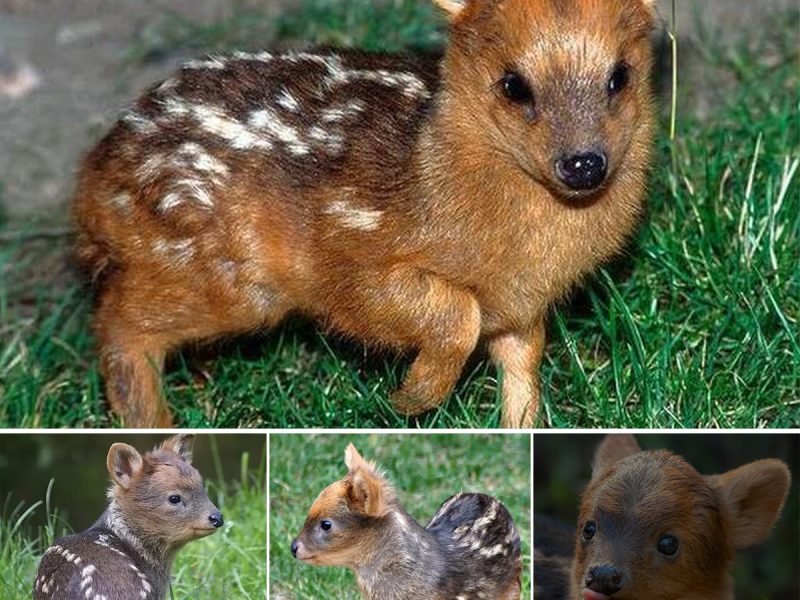There are many spectacular passerine birds in nature. They are gifted one-of-their-kind coats, helping them win the spotlight whenever they appear. True blue pigmentation is rare in nature, and yet, when it comes to light, it’s the most commonly reflected hue. It’s the color of the sky, the water, and gives a feeling of calm and serenity. There is something really special about bluebirds, see the wonderful gallery below.
1 / 8
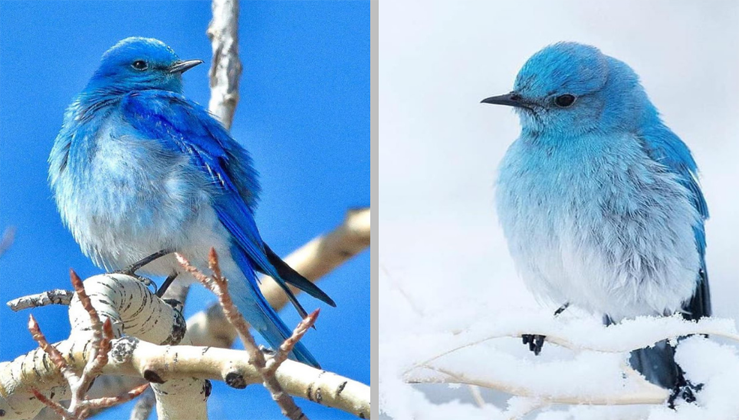
The mountain bluebird (Sialia currucoides) is a medium-sized bird weighing about 30 g (1.1 oz) with a length from 16–20 cm (6.3–7.9 in). They have light underbellies and black eyes. Adult males have thin bills and are bright turquoise-blue and somewhat lighter underneath. Adult females have duller blue wings and tail, grey breast, grey crown, throat and back. In fresh fall plumage, the female’s throat and breast are tinged with red-orange, brownish near the flank contrasting with white tail underparts.
2 / 8
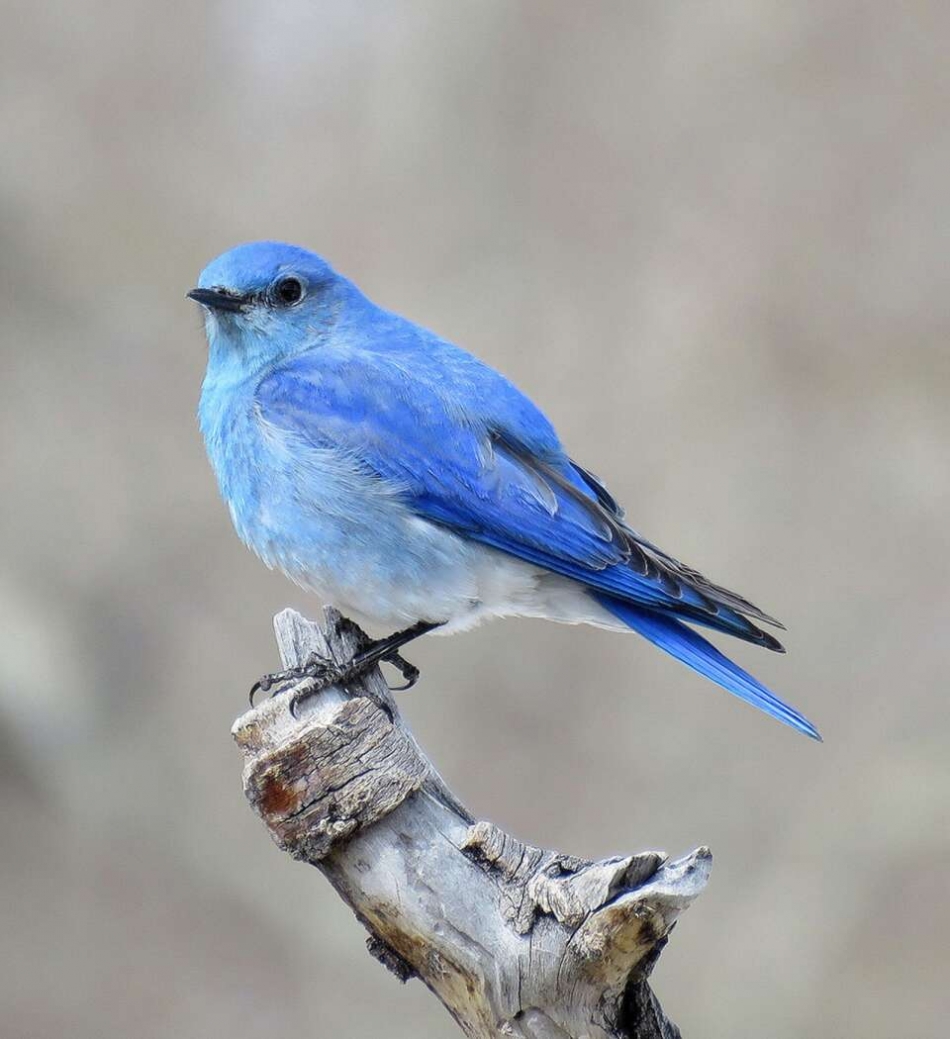
Their call is a thin ‘few’; while their song is warbled high ‘chur chur’. It is the state bird of Idaho and Nevada. It is an omnivore and it can live 6 to 10 years in the wild. It eats spiders, grasshoppers, flies and other insects, and small fruits. The mountain bluebird is a relative of the eastern and western bluebirds. These magnificent birds hover over the ground and fly down to catch insects, also flying from a perch to catch them. They mainly eat insects and berries. They may forage in flocks in winter, when they mainly eat grasshoppers. Mountain Bluebirds will come to a platform feeder with live meal worms, berries, or peanuts.
3 / 8
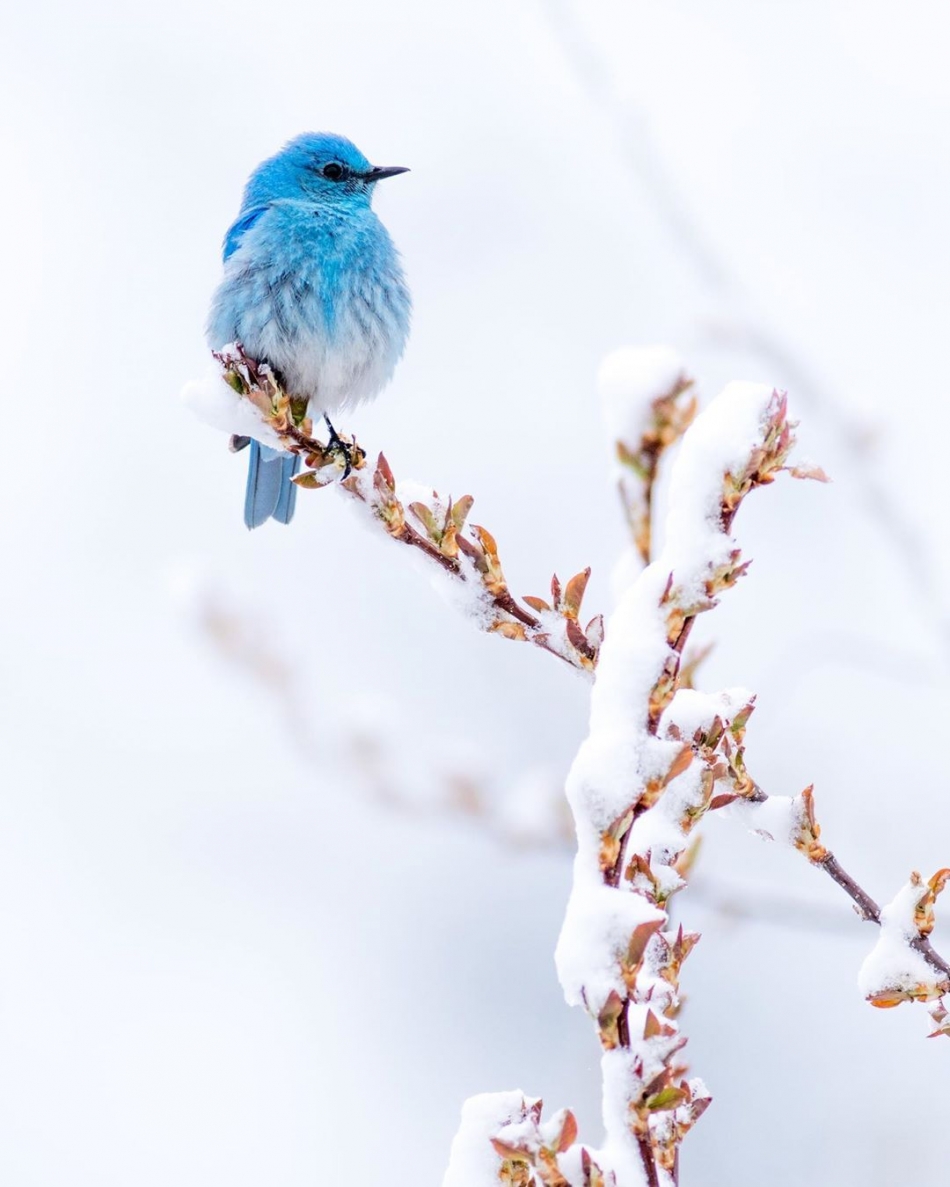
Their breeding habitat is open country across western North America, including mountainous areas, as far north as Alaska. They nest in pre-existing cavities or in nest boxes. In remote areas, these birds are less affected by competition for natural nesting locations than other bluebirds. Mountain bluebirds are a monogamous breed. The male can be seen singing from bare branches. The singing takes place right at dawn, just when the sun rises. Females usually build the nests themselves. Eggs are pale blue and unmarked, sometimes white. The clutch size is four or five eggs. Young are naked and helpless at hatching and may have some down. Incubation normally last 14 days and the young will take about 21 days before they leave the nest. Both males and females fiercely protect the nest. The mountain bluebird is the state bird of Idaho and Nevada.
4 / 8
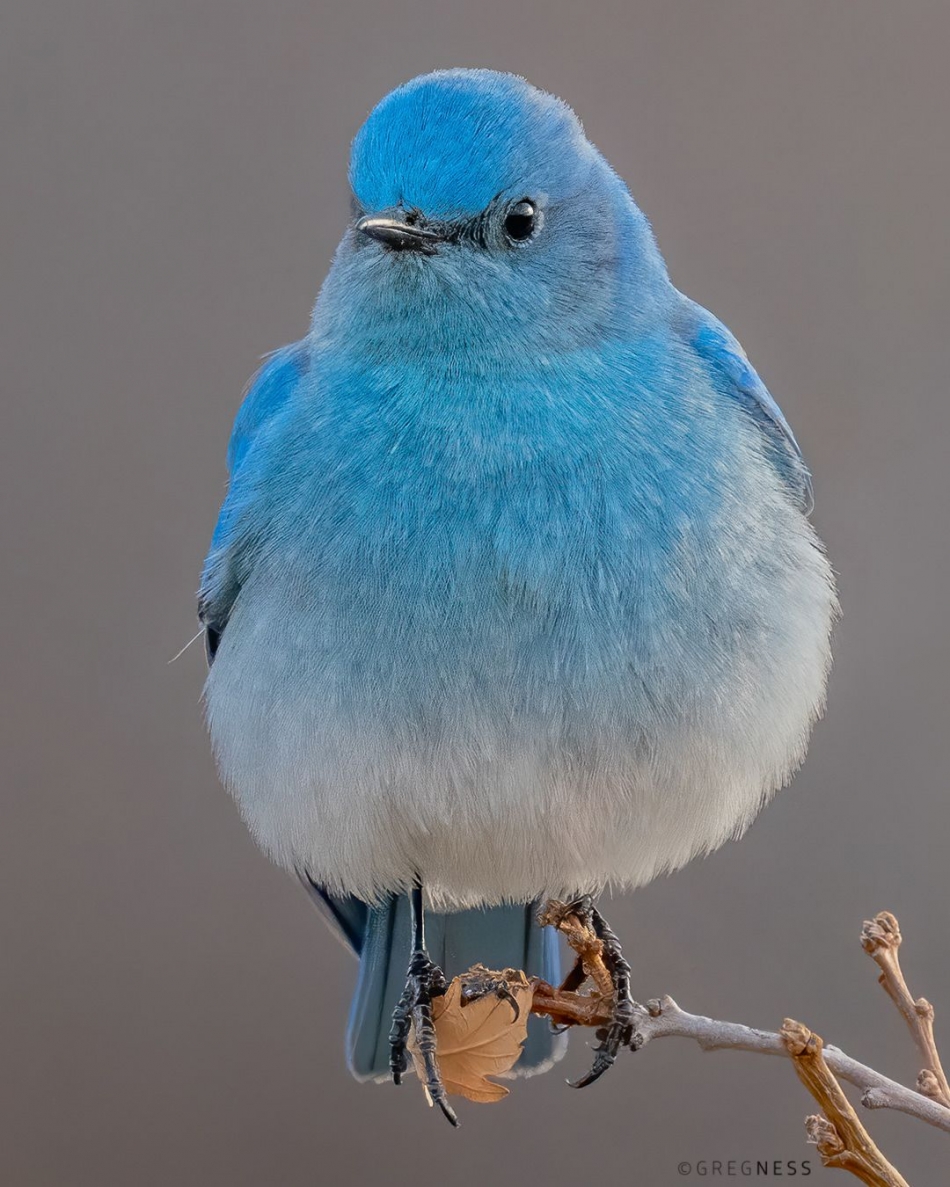
Mountain bluebirds are cavity nesters and can become very partial to a nest box, especially if they have successfully raised a clutch. They may even reuse the same nest, though not always. Mountain bluebirds will not abandon a nest if human activity is detected close by or at the nest. Because of this, they can be easily banded while they are still in the nest.
5 / 8
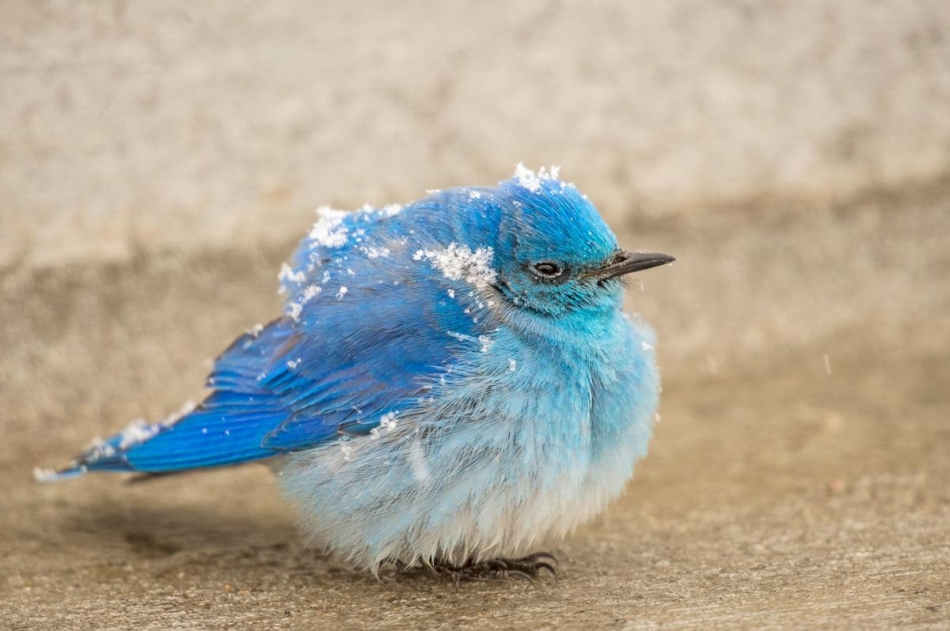
Mountain Bluebirds are fairly common, but populations declined by about 26% between 1966 and 2014, according to the North American Breeding Bird Survey. Partners in Flight estimates the global breeding population of 4.6 million, with 80% spending some part of the year in the U.S., 20% breeding in Canada, and 31% wintering in Mexico. The species rates an 8 out of 20 on the Continental Concern Score. Mountain Bluebird is a U.S.-Canada Stewardship species, and is not on the 2014 State of the Birds Watch List.
6 / 8

These bluebirds benefited from the westward spread of logging and grazing in the late nineteenth and early twentieth centuries, when the clearing of forest created open habitat for foraging. The subsequent waning of these industries, coupled with the deliberate suppression of wildfires, led to a dwindling of open acreage in the West and the decline of the species. More recently, as land-use practices have stabilized, so have Mountain Bluebird populations. Construction of nest boxes in suitable habitat has also provided a population boost.
7 / 8
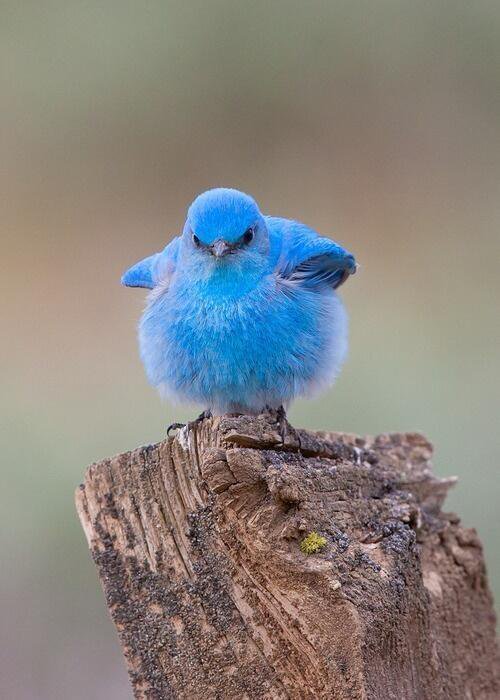
Populations are declining in areas where trees are too small to provide natural nesting cavities, and where forest and agricultural management practices have reduced the availability of suitable nest sites. Among birds that nest in cavities but can’t excavate them on their own, competition is high for nest sites. Mountain, Western, and more recently Eastern bluebirds compete for nest boxes where their ranges overlap. House Sparrows, European Starlings, and House Wrens also compete fiercely with bluebirds for nest cavities.
8 / 8
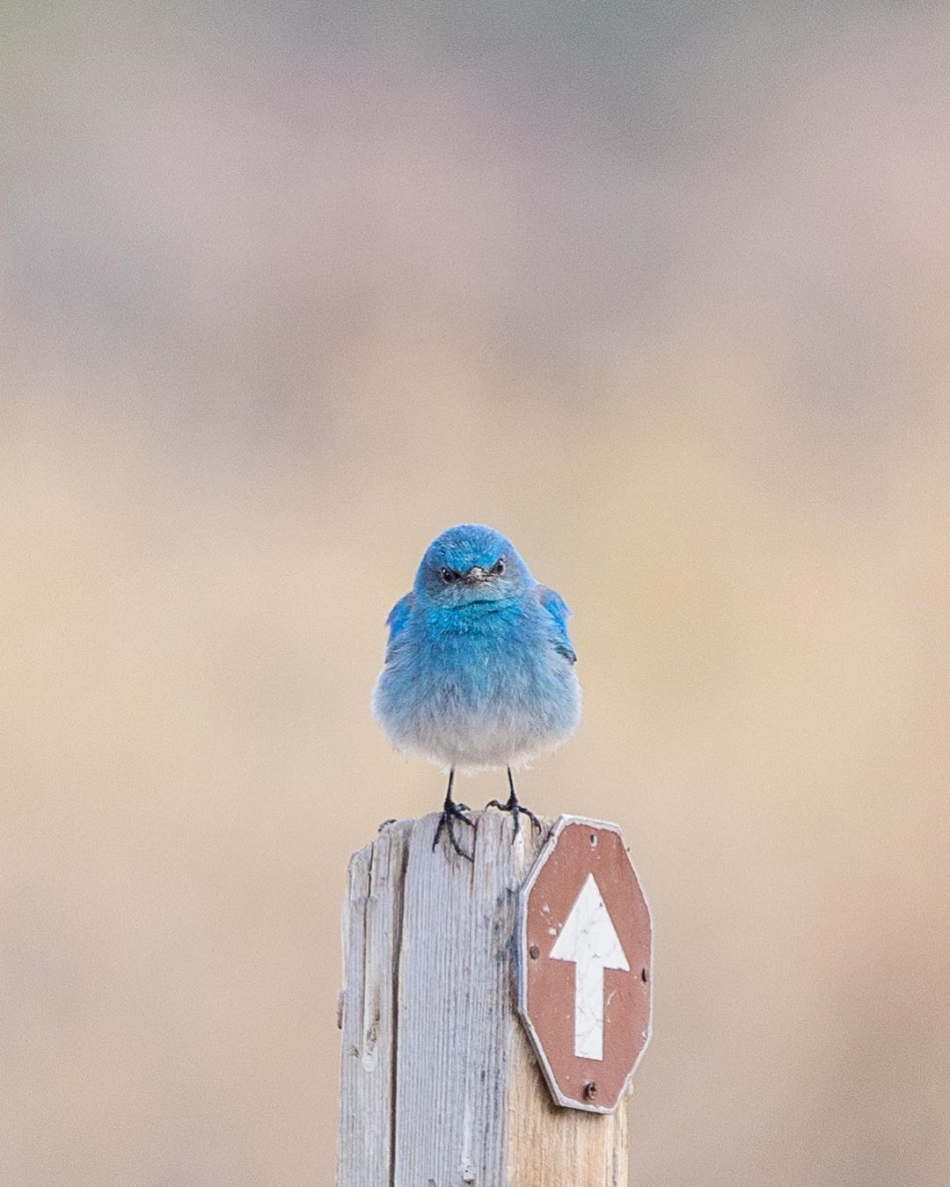
See them in all their glory:

